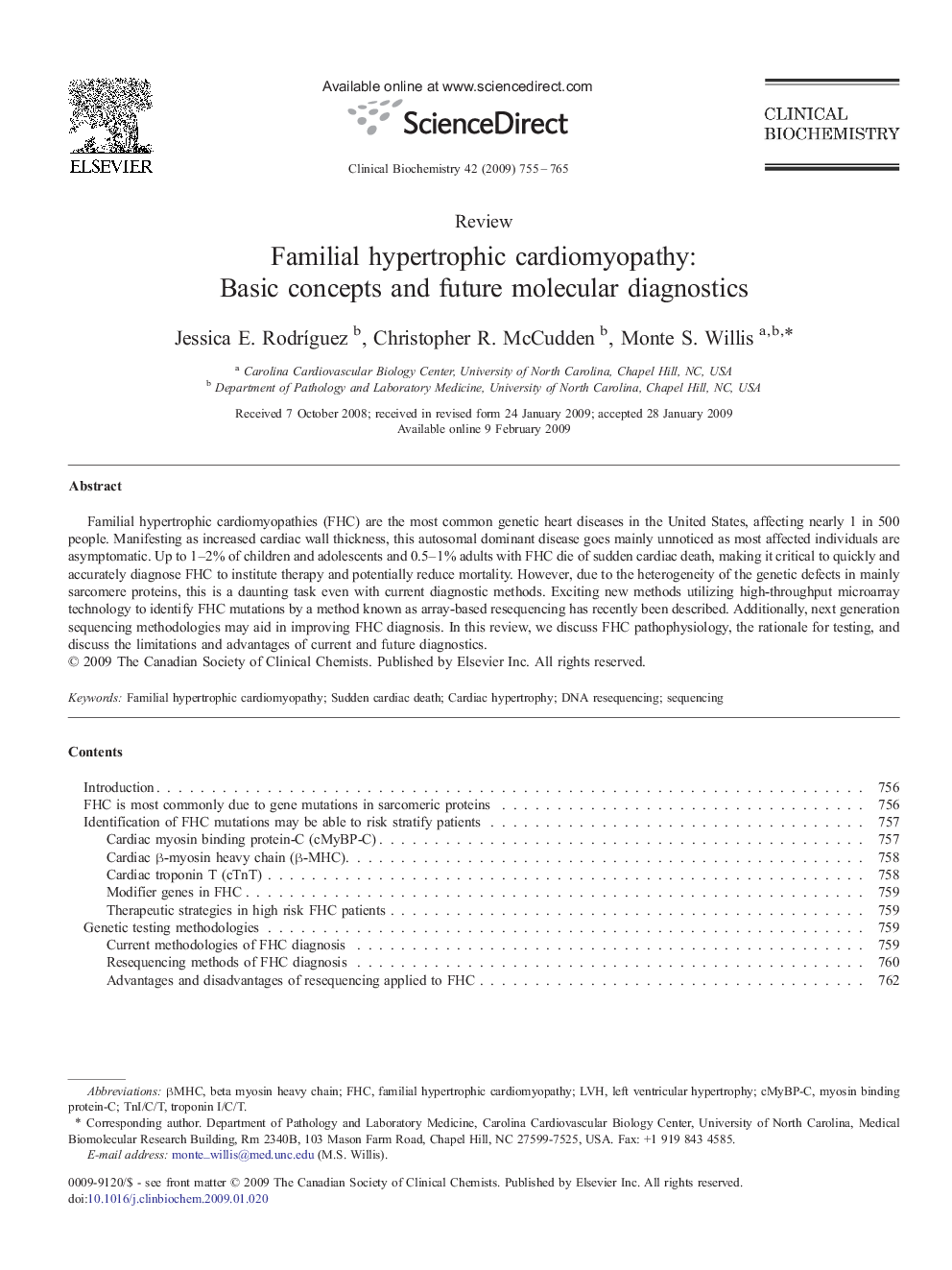| کد مقاله | کد نشریه | سال انتشار | مقاله انگلیسی | نسخه تمام متن |
|---|---|---|---|---|
| 1971060 | 1059835 | 2009 | 11 صفحه PDF | دانلود رایگان |

Familial hypertrophic cardiomyopathies (FHC) are the most common genetic heart diseases in the United States, affecting nearly 1 in 500 people. Manifesting as increased cardiac wall thickness, this autosomal dominant disease goes mainly unnoticed as most affected individuals are asymptomatic. Up to 1–2% of children and adolescents and 0.5–1% adults with FHC die of sudden cardiac death, making it critical to quickly and accurately diagnose FHC to institute therapy and potentially reduce mortality. However, due to the heterogeneity of the genetic defects in mainly sarcomere proteins, this is a daunting task even with current diagnostic methods. Exciting new methods utilizing high-throughput microarray technology to identify FHC mutations by a method known as array-based resequencing has recently been described. Additionally, next generation sequencing methodologies may aid in improving FHC diagnosis. In this review, we discuss FHC pathophysiology, the rationale for testing, and discuss the limitations and advantages of current and future diagnostics.
Journal: Clinical Biochemistry - Volume 42, Issue 9, June 2009, Pages 755–765